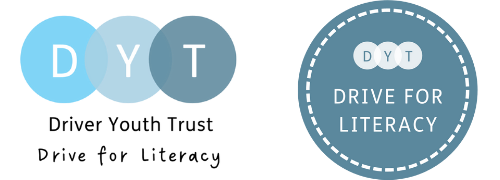How to use wall displays for learning, not distraction
13/11/2017
Drive for Literacy facilitator Richard Selfridge reflects on accessibility in the classroom and how it is an embedded concept in the work we do at Driver Youth Trust…
Drive for Literacy & Accessibility
As part of our flagship Drive for Literacy programme, here at the Driver Youth Trust we work with partner schools to unpick why there may be learners with emerging literacy skills who are falling through educational cracks.
Children with dyslexia, for example, find many aspects of schooling can hinder their efforts to learn. Simply implementing ideas which make classrooms more dyslexia friendly using our Checklist for creating a Dyslexia Friendly Classroom, available free via our DFL Toolkit, helps not only those children with dyslexia, but helps other learners too. Ensuring that all learners have equal access to learning is a key principle in our DfL programme.
Recently, we have been working with one of our DfL schools to explore how educational research can help to inform the effective use of resources within classrooms, and ways in which resources can aid children with their learning.
We were particularly interested in ways to use wall displays to aid learning, and we spent some time considering how what children could see around them in the primary classroom might help, or hinder, their learning.
Key principles for classroom displays
Drawing on research which suggested that wall displays can frequently distract learners1, we developed principles to ensure that resources on walls should be created with a background and a focus in mind. Some displays have wildly colourful backgrounds, as are often seen in the early years, and some have simple single-colour backgrounds, regularly used as children move into upper Key Stage 2.
When discussing displays with children, we found that younger children wanted colourful displays with lots of information. Older children, who wanted to focus on their work and use what they had learned already, preferred fewer potential distractions in their classroom environment.
A further principle we developed is that some types of wall displays have to make it clear what children are expected to focus on, using questions or captions to make the children think hard. Questions on displays demand a response, and make children think about the area of learning displayed on the wall.
Simply captioning a display of artwork based on aerial bombardments of London with the words ‘The Blitz’, for example, is likely to ensure that children in a Year 5 class regularly think about what they have been learning about this period of history.
Other displays, such as those used to support learning in Maths and English, should have focus directed by teaching staff during lesson time. Placing words of the week in clearly marked focus areas can help children to think about what they have learned or are learning. Removing parts of displays for a short time can create a focus as well as being a powerful trigger for practicing retrieval, which can help children to think about the learning in their long term memory.
Classroom displays have a dual purpose
Above all, a key principle is that primary classroom walls have to be maintained with their dual purpose in mind: to make the classroom a welcoming environment, as well as being a valuable resource to help children with their learning. Whilst this can create tensions at times, all learners benefit when the purpose and learning of the wall displays in school is clear and distraction-free.
By considering what makes learning accessible for those who struggle with core tasks such as reading, writing, speaking and listening, we aim to ensure that all learners have equal access by removing barriers which research has identified.
Classroom environments can clearly detract from learning, as the research we have explored has shown. By introducing principles for wall displays in our partner school, we aim to minimise the distractions and maximise the support for all learners. We will continue to monitor the impact our work is having with our partner school, and report back later in 2018.
If you are interested in becoming a DfL Partner School, in our January-December 2018 cohort, please email info@driveryouthtrust.com for details.

- V. Fisher, K. E. Godwin, H. Seltman. Visual Environment, Attention Allocation, and Learning in Young Children: When Too Much of a Good Thing May Be Bad. Psychological Science, 2014

